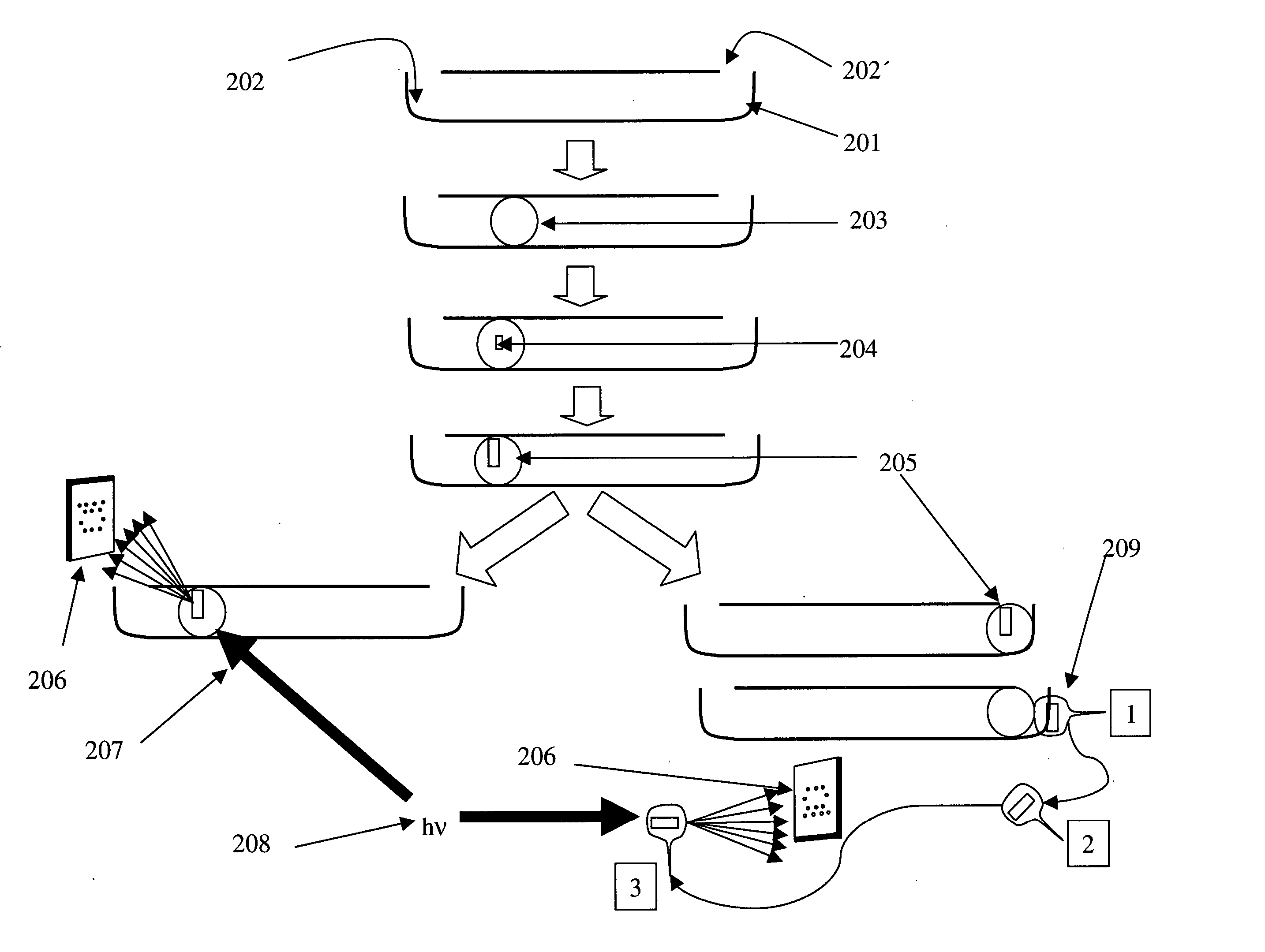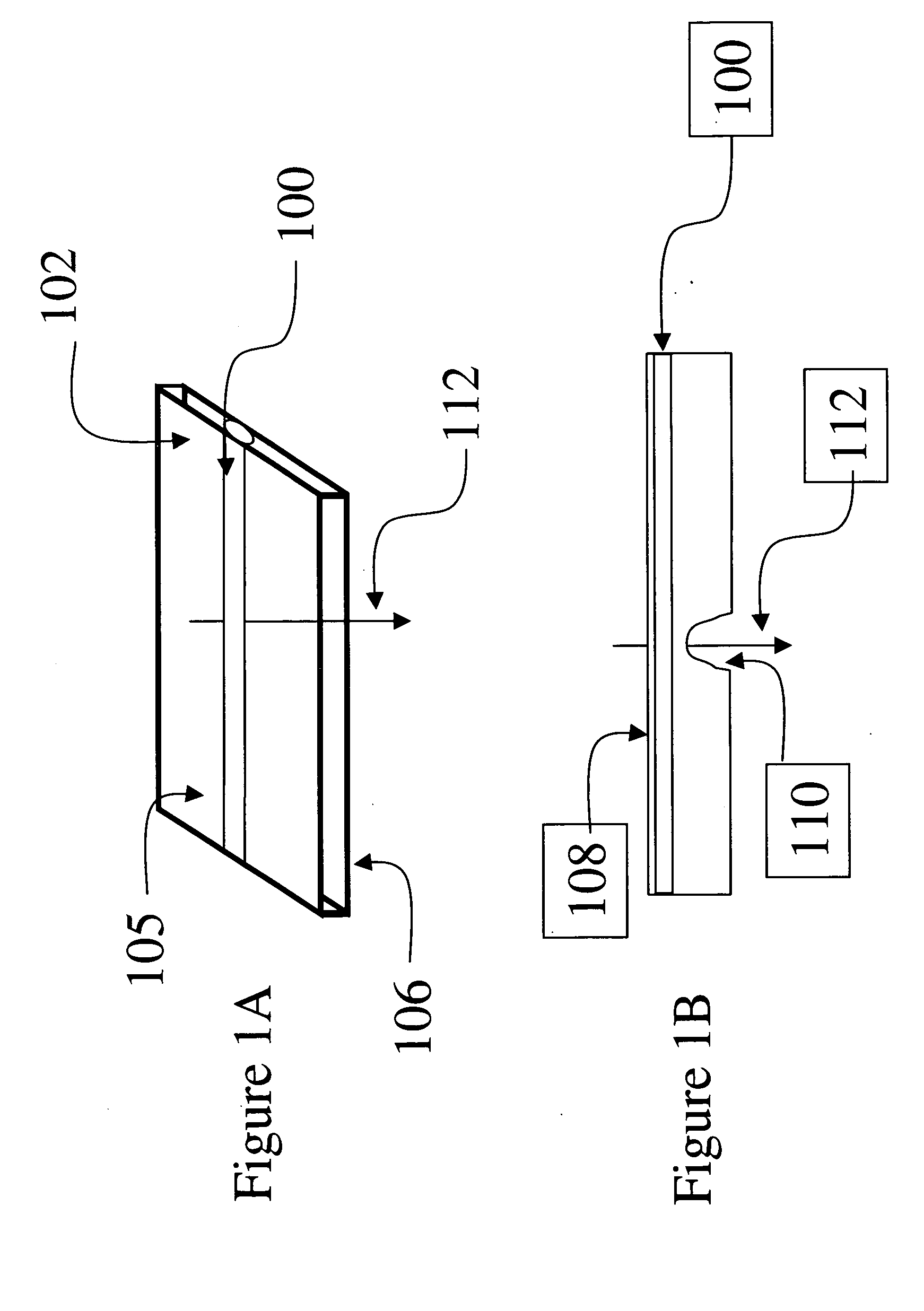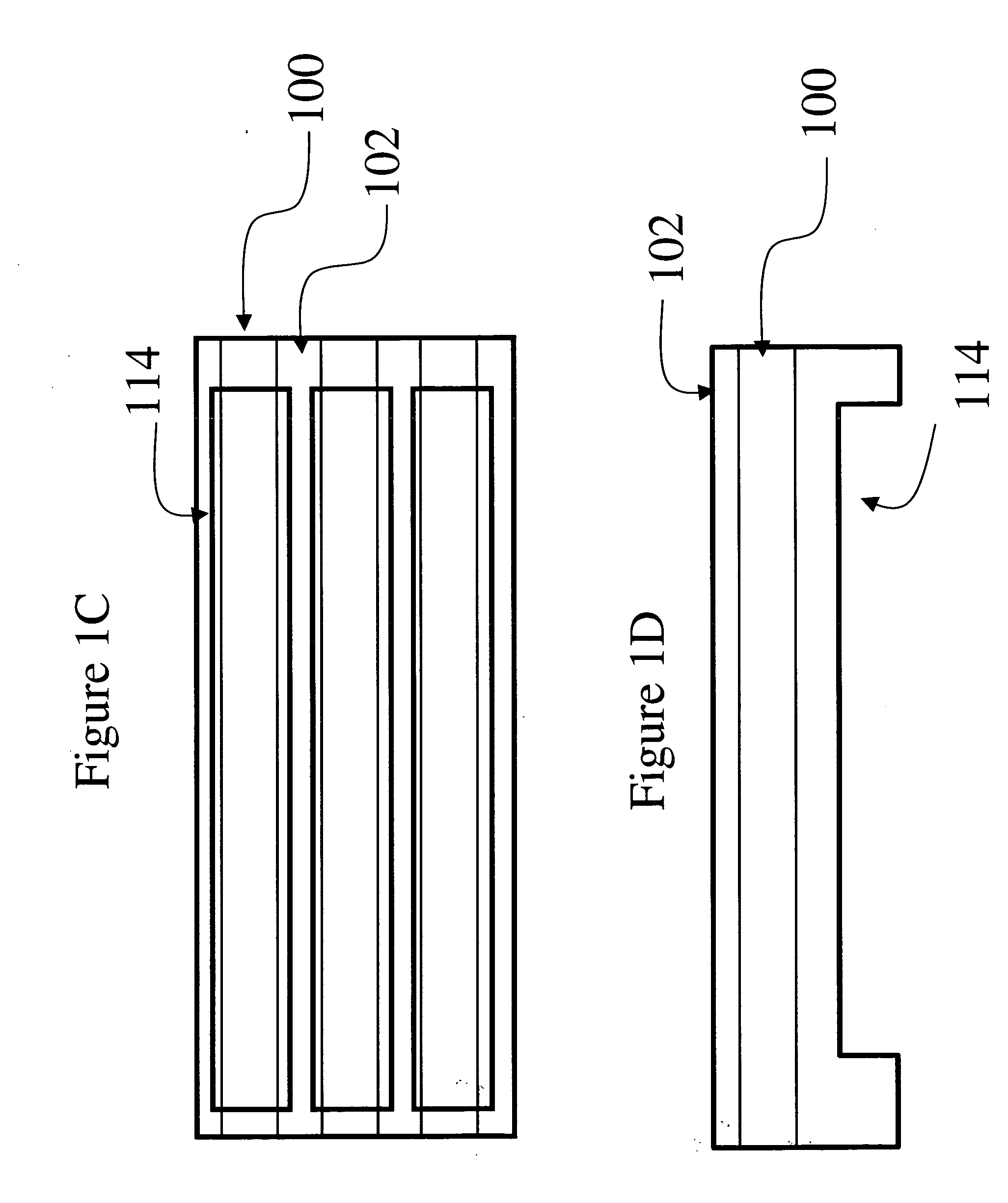Microfluidic device with diffusion between adjacent lumens
a microfluidic device and adjacent lumen technology, applied in the direction of instruments, crystal growth process, polycrystalline material growth, etc., can solve the problems of high labor intensity, time-consuming process of growing crystals with high diffraction quality, and high labor intensity of traditional methods for crystal growth and crystallization, so as to facilitate the device being rotated, and facilitate the effect of device rotation
- Summary
- Abstract
- Description
- Claims
- Application Information
AI Technical Summary
Benefits of technology
Problems solved by technology
Method used
Image
Examples
Embodiment Construction
[0159] The present invention relates to various methods, devices and kits relating to microfluidics.
[0160] One particular aspect of the present invention relates to the use of these methods and devices for forming crystallization samples, transporting crystallization samples, and crystallizing materials therein, particularly on a microvolume scale, high throughput manner. Distinguishing the present invention in this regard is the performance of the crystallizations in very small, substantially enclosed volumes formed by or within a substrate, referred to herein as an “enclosed microvolume”. Other aspects of the present invention will be understood by one of ordinary skill in view of the teachings provided herein.
[0161] It is noted that many of the particular embodiments are described herein in regard to performing crystallization experiments. However, it should be understood that many of the operations involved in performing crystallization experiments (e.g., measuring, mixing, fl...
PUM
| Property | Measurement | Unit |
|---|---|---|
| volumes | aaaaa | aaaaa |
| volumes | aaaaa | aaaaa |
| angle | aaaaa | aaaaa |
Abstract
Description
Claims
Application Information
 Login to View More
Login to View More - R&D
- Intellectual Property
- Life Sciences
- Materials
- Tech Scout
- Unparalleled Data Quality
- Higher Quality Content
- 60% Fewer Hallucinations
Browse by: Latest US Patents, China's latest patents, Technical Efficacy Thesaurus, Application Domain, Technology Topic, Popular Technical Reports.
© 2025 PatSnap. All rights reserved.Legal|Privacy policy|Modern Slavery Act Transparency Statement|Sitemap|About US| Contact US: help@patsnap.com



